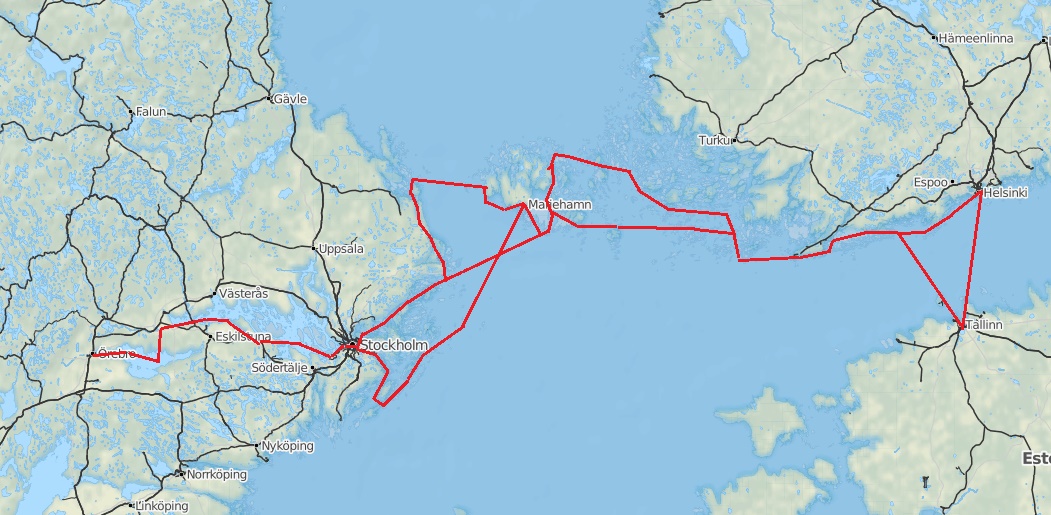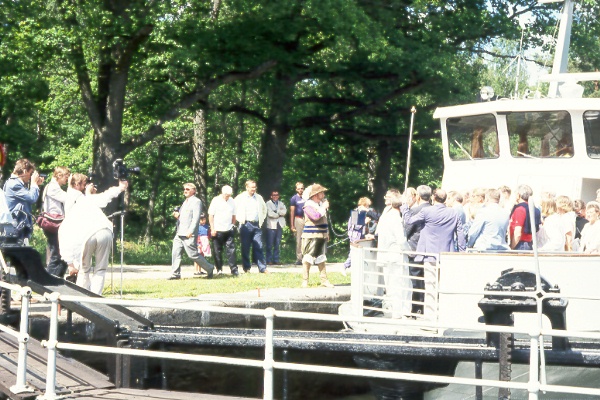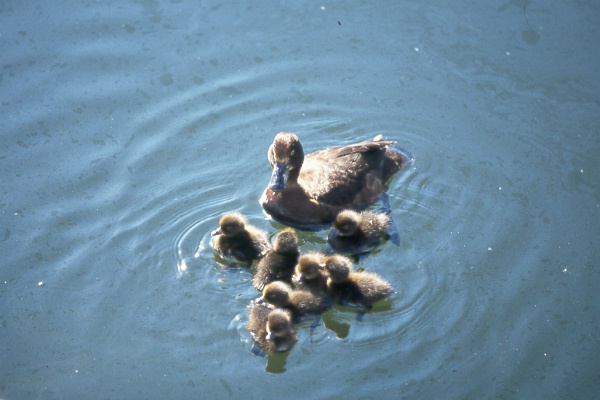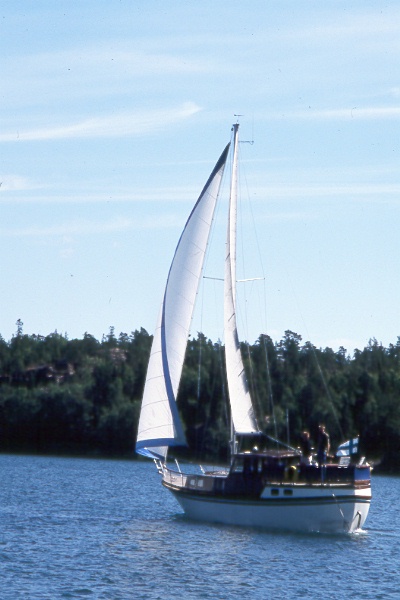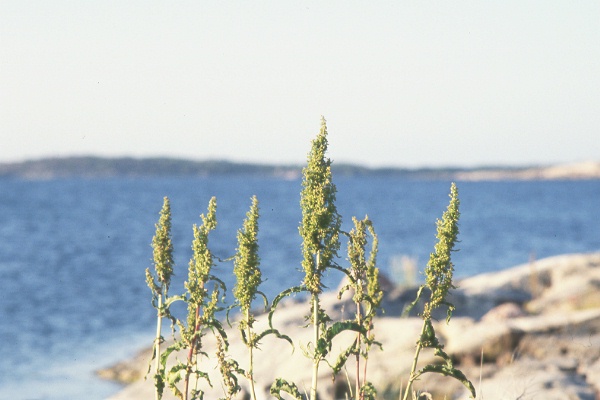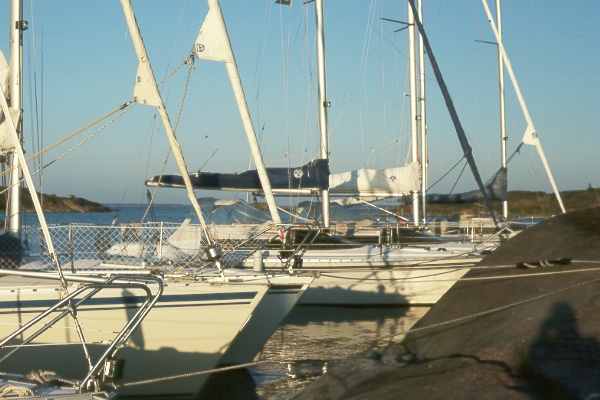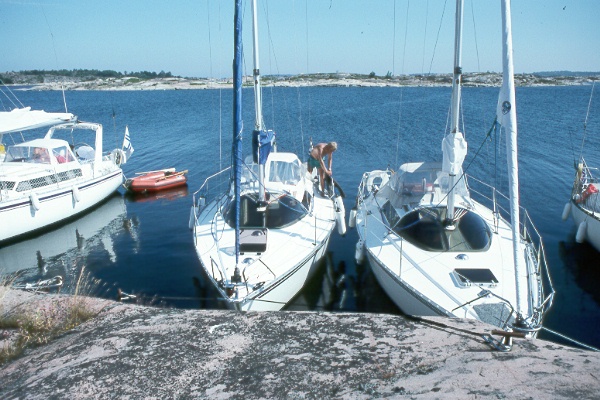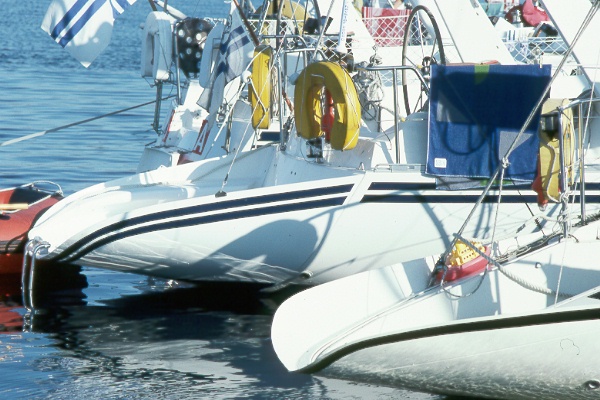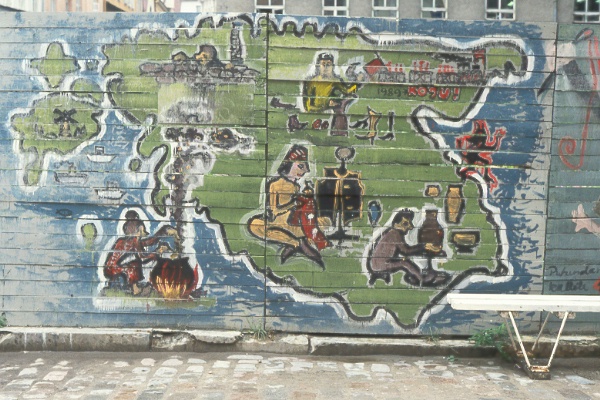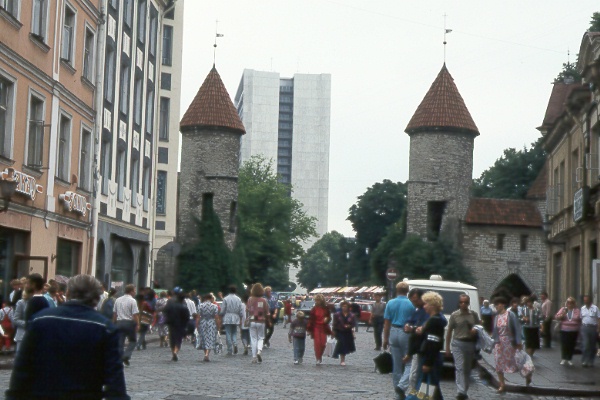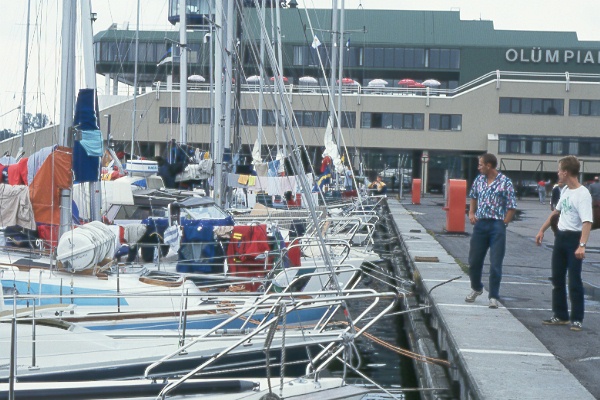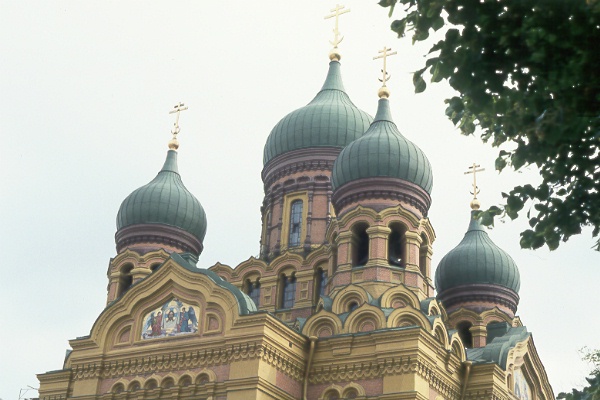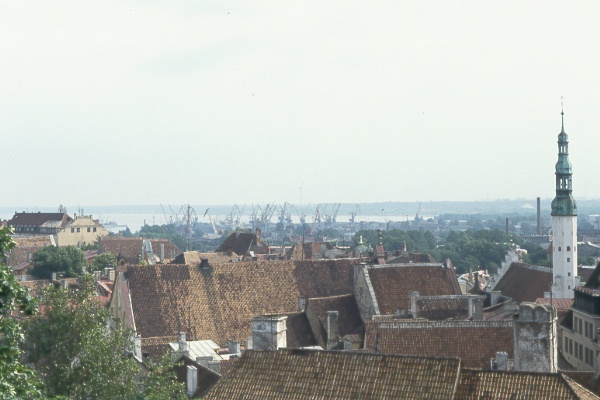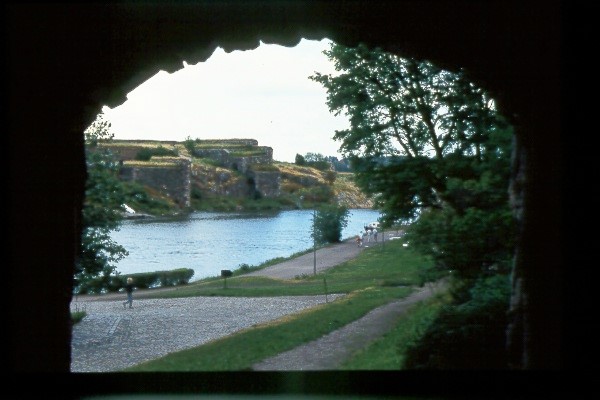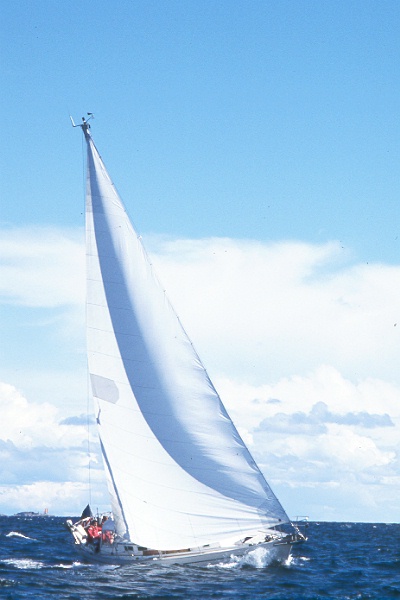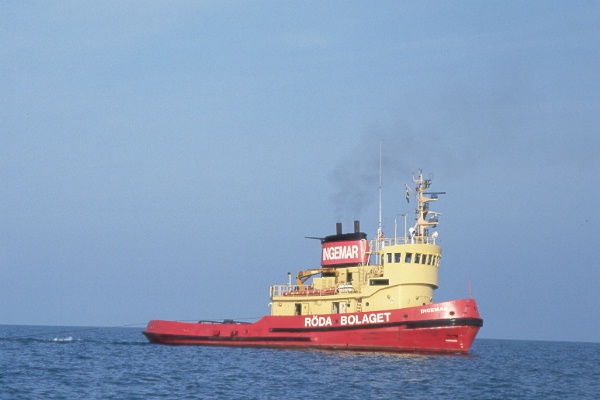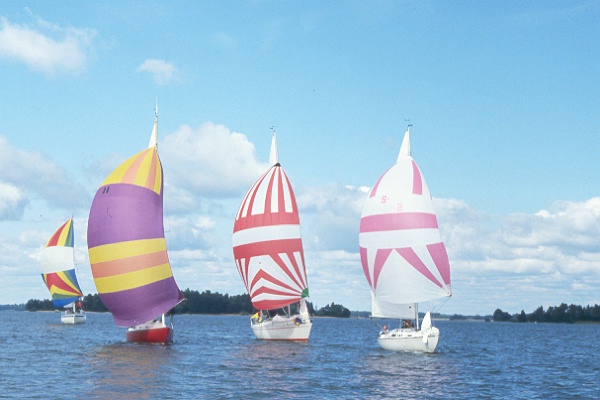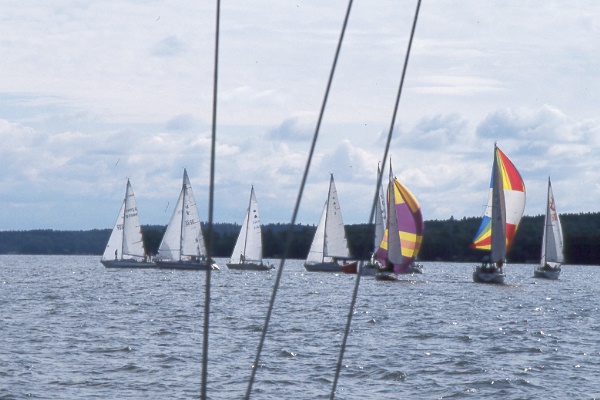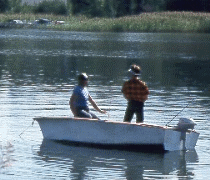
 1989
1989


Sailing to Finland and Estonia
Örebro, Stockholm, Archipelago Sea, Tallin and Helsinki by Johan Kjellander 1989-2014 På svenska
For many years I wanted to sail to Tallin, the capitol of the Soviet state Estonia, but every year as I phoned the Soviet embassy to get a visa, they informed me there was no harbour in Tallin. Then suddenly 1989 when I phoned again, there was a harbour, and I could get a visa for a 3 day visit.
We took the usual route from Örebro to Stockholm and Åland, then continued through the Sea of Archipelago to Hangö where we set course for Tallin. After our visit in Tallin we continued to Helsingfors, the capitol of Finland, before we returned back home to Sweden. This year our log showed 1450 NM by the end of the season.
Örebro-Aland
If you have our home port in Örebro, the salt sea is far away. First through lake Hjälmaren, then the old canal into Arboga river and on to Kungsör by Mälaren. Then through the whole of Mälaren and out into the Baltic Sea via Södertälje or Stockholm. Normally this takes at least 2 days with all the locks and bridge openings you have to wait for.
Hjälmare Canal is one of Europe's oldest waterways. A few years ago, the 350th anniversary was celebrated. In the picture above a dressed up Anders Ponten welcomes passenger ship MF Hjelmare Kanal into the lock at Hjälmare Docka.
Tove and I both like old canals. It's quiet and peaceful and large beautiful trees lean over the water. Lots of wildlife, many different kinds of birds.
From Stockholm we sailed east to Finland via Åland, where we met good friends Berndt and Ica from Ekenäs. Here they leave us for full sails in their lovely SeaFinn-41: a.
Between Åland and Finland lies what is usually called the Archipelago Sea. You could say it's a natural extension of the Stockholm archipelago east towards Finland. Very beautiful waters with friendly people who also speak Swedish. On most islands there is a sauna to borrow in the harbor.
The dock (Sv:Skräppa, Lat:Rumex) on the picture grew that summer on one of these islands.
Our boat is a Guyline designed by Guy-Christer Lönngren in Turku, Finland. Every summer he arranges a small meeting for Guyline owners on an island near Turku. Some 15 boats usually come. The program consists of racing, tip walking and in the evening a big party on the shore.
One of his later creations is the Guyline 822. Here are two of them next to each other. To the left in the picture is a Guyline 3800 with the characteristic targa over the cockpit.
Many Guyline owners have extensions on their stern (Ducktails). In this way you increase the speed a bit and get a good bathing platform. It was this that gave us the idea of making our own boat longer.
Estonia
From the Guyline meeting in the Turku archipelago, we crossed the Gulf of Finland and continued east to Tallin in what was then the Soviet Union.
For many years I had tried to find out if you could sail to Tallin in Estonia and several times called the Soviet embassy in Stockholm to get a visa, but they always responded in a typically Soviet manner that there was no port in Tallin this year. So suddenly everything changed. Already in 1988 I believe that it was possible to get a visa to Tallin and in 1989 when we sailed there was no problem at all with permission. It required a visa of course and when we arrived in Tallin, both Soviet passport police and customs boarded up and even noted the manufacturing number of an air rifle that we had on board. On departure, it was carefully checked that the rifle had not left the boat!
Now afterwards, it's fun to have visited Estonia with your own boat during the Soviet era. There are not so many sailors who have the Soviet guest flag in their collection. For the Estonians themselves, of course, it was not as fun as can be seen from the graffiti in the picture above. Note the black devil on the eastern border!
Tallin is just like Visby or Lubeck an old Hansa city. In the picture above you see parts of the medieval ring wall and in the background a much more modern hotel.
The only port available for foreign sailboats was the so-called Olympia harbor, which was built for the Moscow Olympics in 1980. It was certainly very fine when it was new but 9 years later when this picture was taken it had already begun to decay considerably.
When we arrived, we were the only visitors in the harbor but suddenly a steady flow boats belonging to this year's race from Stockholm via Tallin to Helsinki arrived. In the evening there was a regatta table with dinner consisting of fried wild boar and other exciting dishes. We were offered to attend at 250:- per person. For this we got half a plastic mug of bad wine and a paper plate with a slice of wild boar and potatoes. There was no where to sit. The coffee was out and a total of about 200 people had 4 bottles of domestic brandy to share. It was evident that the Estonian hosts were ashamed of the fact that they could not achieve better, but what would they do. It simply wasn't possible to get hold of the food they had plannes for. We felt so sorry for them.
To begin with, we felt cheated but suddenly, from nowhere arrived hundreds of bottles of coca cola and a whole table full of smoked perch and flounder. Much more than we could possibly eat. Everybody's took as much as they could. I had coca cola in my pockets and Tove had smoked perch in her handbag when we left the party. We did'nt get what was on the menu but this was just as good and much more fun.
The richly ornamented orthodox church in Tallin is typical of the eastern countries.
A view from the top of the old city over the rooftops past the tower Höge Herman and further down towards the cargo cranes in the harbor.
Finland-Örebro
From Tallin, we continued to Helsinki. Outside, protecting the harbour, is the old Swedish fortress Sveaborg and just inside is Nylands Jaktklubb's little island with marina for visiting yachts.
As we enter the marina, to our great surprise we see an American boat that we met in the Faroe Islands one year earlier. Ed and Susan and guess if they were surprised to see us. We made company for a few days through the Finnish archipelago back to Sweden. They left the United States a year earlier and had spent the winter in the Mediterranean. Now they wanted to see the Baltic Sea before they sailed south towards the Caribbean and returned back home to the US.
On this picture we have just left Helsinki with Ed and Susan following us.
Towboat Ingemar from the Red Company somewhere on the Baltic. Guess what she tows? Two complete sections of a big cargoship, probably built in Finland on their way to be joined with other sections to a complete ship on a yard somewhere. Looked crazy.
By the end of August each year, one of Sweden's biggest sailing races is held in Lake Hjälmaren. The name of the race is Vinö Sail Race and the route goes as the name suggests around Vinö Island in Lake Hjälmaren. 100-150 boats usually gather to sail the 25 mile long route. Southern Hjälmaren's Boat Club arranges.
There are many clubs in Lake Hjälmaren and plenty of opportunities for racing. There are also many nice natural harbors with cliffs or sandy beaches. About 1000 sailboats are expected to be in the lake, but there are also sailing canoes and in winter there are ice yachts with which people also compete.
Another picture from Vinö Sail Race 1989. It is urgent to bring down the spinnaker at the rounding mark and then start tacking again.
Oh, I slipped a bit. Tove took these four pictures in connection with the rescue services having a show under the Vinön Sail Race 1989 and the guys in the boat are thus firefighters who play theater and even put fire to the boat, so their colleagues can come to rescue!
